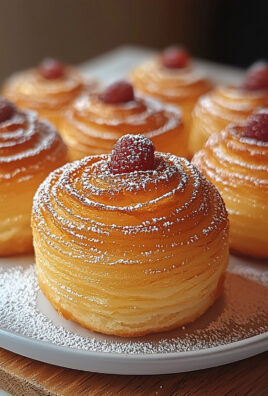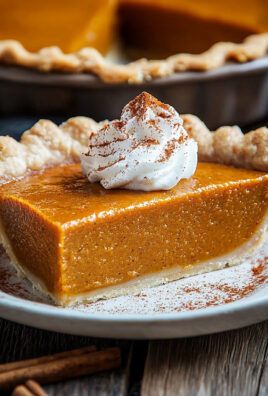Chocolate Peanut Butter Fudge, a symphony of sweet and salty, rich and creamy, is a dessert that needs no introduction. But let me tell you, this isn’t just any fudge recipe; it’s a shortcut to pure, unadulterated bliss. Forget complicated candy thermometers and hours of stirring this recipe delivers decadent, melt-in-your-mouth fudge in a fraction of the time.
While the exact origins of fudge are debated, its popularity exploded in the late 19th century, becoming a staple at candy shops and county fairs across America. The combination of chocolate and peanut butter, however, is a more modern love affair, a match made in dessert heaven that perfectly balances the bitterness of dark chocolate with the nutty sweetness of peanut butter.
What makes chocolate peanut butter fudge so irresistible? It’s the texture, that smooth, creamy consistency that practically dissolves on your tongue. It’s the flavor, a harmonious blend of rich chocolate and salty peanut butter that satisfies every craving. And it’s the convenience this recipe is so easy to make, even a novice baker can whip up a batch in minutes. Whether you’re looking for a quick treat for yourself, a crowd-pleasing dessert for a party, or a thoughtful homemade gift, this fudge is guaranteed to be a hit. So, grab your ingredients, and let’s get started!
Ingredients:
- 1 cup (2 sticks) unsalted butter, softened
- 3 cups granulated sugar
- 2/3 cup unsweetened cocoa powder
- 1/2 cup milk
- 1/4 teaspoon salt
- 1 teaspoon vanilla extract
- 1 cup creamy peanut butter
- 3 cups powdered sugar, sifted
Preparing the Fudge Base:
- In a large, heavy-bottomed saucepan, combine the softened butter, granulated sugar, cocoa powder, milk, and salt. I like to use a heavy-bottomed pan because it helps to prevent the fudge from scorching as it cooks.
- Place the saucepan over medium heat and stir constantly until the butter is melted and the sugar is dissolved. It’s crucial to stir constantly during this process to ensure that the mixture doesn’t stick to the bottom of the pan and burn.
- Once the mixture is smooth and the sugar is completely dissolved, bring it to a rolling boil. A rolling boil means that the mixture continues to boil even while you are stirring it.
- Continue to boil the mixture for exactly 1 minute, stirring constantly. Use a timer to ensure accuracy. This step is essential for achieving the correct consistency of the fudge. If you don’t boil it long enough, the fudge will be too soft; if you boil it too long, it will be too hard.
- Remove the saucepan from the heat immediately after the 1-minute boil.
Adding Peanut Butter and Powdered Sugar:
- Add the vanilla extract and creamy peanut butter to the hot mixture. Stir vigorously until the peanut butter is completely melted and incorporated. Make sure there are no streaks of peanut butter remaining.
- Gradually add the sifted powdered sugar, one cup at a time, mixing well after each addition. Sifting the powdered sugar is important to prevent lumps in the fudge. I usually use a whisk to incorporate the powdered sugar, as it helps to break up any clumps.
- Continue to mix until the powdered sugar is fully incorporated and the mixture is smooth and creamy. The mixture will become quite thick at this point, so you may need to use a sturdy spoon or spatula.
Setting the Fudge:
- Line an 8×8 inch square baking pan with parchment paper, leaving an overhang on two sides. The parchment paper will make it easy to lift the fudge out of the pan once it has set. The overhang acts as handles.
- Pour the fudge mixture into the prepared pan and spread it evenly with a spatula. Make sure to press the fudge into the corners of the pan to ensure a uniform thickness.
- Let the fudge cool completely at room temperature for at least 2 hours. You can also refrigerate it for a faster setting time, but I find that letting it set at room temperature results in a smoother texture.
- Once the fudge is firm, lift it out of the pan using the parchment paper overhang.
- Place the fudge on a cutting board and cut it into small squares. I usually cut it into 1-inch squares, but you can adjust the size to your preference.
Tips and Variations:
Here are some tips and variations to make your Chocolate Peanut Butter Fudge even better:
- Use high-quality ingredients: The quality of your ingredients will directly impact the taste of the fudge. Use good quality butter, cocoa powder, and peanut butter for the best results.
- Don’t overcook the fudge: Overcooking the fudge will result in a dry, crumbly texture. Be sure to follow the boiling time exactly.
- Add chocolate chips: For an extra chocolatey treat, stir in 1 cup of chocolate chips (milk, dark, or semi-sweet) after adding the peanut butter.
- Add nuts: For a crunchy texture, stir in 1/2 cup of chopped nuts (such as peanuts, walnuts, or pecans) after adding the peanut butter.
- Swirl in extra peanut butter: For a marbled effect, melt 1/4 cup of peanut butter and swirl it into the fudge after pouring it into the pan.
- Use different extracts: Experiment with different extracts, such as almond extract or peppermint extract, to add a unique flavor to the fudge.
- Make it vegan: Substitute the butter with vegan butter, the milk with plant-based milk (such as almond milk or soy milk), and ensure your powdered sugar is vegan-friendly.
- Storage: Store the fudge in an airtight container at room temperature for up to 1 week, or in the refrigerator for up to 2 weeks. You can also freeze the fudge for up to 2 months. Wrap it tightly in plastic wrap and then place it in a freezer-safe bag or container.
Troubleshooting:
Sometimes, things don’t go exactly as planned. Here are some common issues and how to fix them:
- Fudge is too soft: If the fudge is too soft, it may not have been boiled long enough. Next time, try boiling it for a few seconds longer. You can also try refrigerating the fudge for a longer period of time.
- Fudge is too hard: If the fudge is too hard, it may have been boiled for too long. Next time, try boiling it for a few seconds less.
- Fudge is grainy: Grainy fudge can be caused by undissolved sugar. Make sure to stir the mixture constantly while it is cooking to ensure that the sugar is completely dissolved. Sifting the powdered sugar also helps prevent graininess.
- Fudge is lumpy: Lumpy fudge is usually caused by lumps in the powdered sugar. Be sure to sift the powdered sugar before adding it to the mixture.
Detailed Explanation of Key Steps:
The Importance of the Boiling Stage
The boiling stage is arguably the most critical part of making this fudge. During this minute, the sugar mixture reaches a specific temperature that allows it to crystallize properly as it cools. If you don’t boil it long enough, the fudge won’t set correctly and will remain too soft and gooey. On the other hand, if you boil it for too long, too much moisture will evaporate, resulting in a dry, crumbly fudge. Using a candy thermometer can help ensure accuracy, aiming for a temperature of around 235-240°F (113-116°C), which is the soft-ball stage. However, the 1-minute boil method is generally reliable if you follow the recipe closely.
Why Sifting Powdered Sugar Matters
Sifting powdered sugar might seem like an unnecessary step, but it’s crucial for achieving a smooth, creamy fudge. Powdered sugar tends to clump together, and if you add it directly to the mixture without sifting, those clumps will remain in the fudge, resulting in a lumpy texture. Sifting breaks up these clumps, allowing the powdered sugar to incorporate evenly into the mixture. This ensures a smooth, melt-in-your-mouth texture that is characteristic of good fudge.
The Role of Peanut Butter
Peanut butter not only adds flavor to the fudge but also contributes to its texture. The fats in peanut butter help to create a smooth, creamy consistency, while the peanut solids add a slight chewiness. It’s important to use creamy peanut butter for this recipe, as chunky peanut butter will result in a grainy texture. Make sure to stir the peanut butter in thoroughly until it is completely melted and incorporated into the mixture. Any streaks of peanut butter will affect the overall texture and appearance of the fudge.
Cooling and Setting
The cooling and setting process is just as important as the cooking process. Allowing the fudge to cool slowly at room temperature allows the sugar crystals to form properly, resulting in a smooth, creamy texture. Refrigerating the fudge will speed up the setting process, but it can also result in a slightly harder texture. I prefer to let it cool at room temperature for at least 2 hours, or even overnight, for the best results. Once the fudge is firm, it’s ready to be cut and enjoyed!
Choosing the Right Pan
The size and material of the pan you use can also affect the outcome of the fudge. An 8×8 inch square pan is the ideal size for this recipe, as it will result in a fudge that is about 1 inch thick. If you use a larger pan, the fudge will be thinner, and if you use a smaller pan, it will be thicker. It’s also important to line the pan with parchment paper, as this will make it easy to lift the fudge out of the pan once it has set. The parchment paper also prevents the fudge from sticking to the pan, which can be a problem with some types of pans.
Adjusting for Altitude
If you live at a high altitude, you may need to adjust the cooking time of the fudge. Water boils at a lower temperature at higher altitudes, which means that the fudge will take longer to reach the desired temperature.

Conclusion:
This Chocolate Peanut Butter Fudge isn’t just another dessert; it’s a decadent experience waiting to happen. From the rich, dark chocolate base to the creamy, salty peanut butter swirl, every bite is a symphony of flavors and textures that will leave you craving more. I know, I know, I sound dramatic, but trust me, this fudge deserves the hype! It’s incredibly easy to make, requiring minimal ingredients and effort, yet the results are truly impressive. Forget spending hours in the kitchen; this recipe delivers maximum impact with minimal fuss.
Why is this a must-try? Because it’s the perfect balance of sweet and salty, rich and creamy, and utterly irresistible. It’s a crowd-pleaser, a guaranteed hit at parties, and the ultimate comfort food for those moments when you need a little pick-me-up. Plus, it’s so much better than anything you can buy in a store! You control the quality of the ingredients, ensuring a truly superior fudge experience.
But the best part? The versatility! While this recipe is fantastic as is, there are so many ways to customize it to your liking.
Serving Suggestions & Variations:
* Classic Presentation: Cut the fudge into small squares and serve it on a pretty platter. A sprinkle of sea salt on top adds a touch of elegance and enhances the flavors.
* Gift-Giving Delight: Package the fudge in decorative boxes or tins for a thoughtful and delicious homemade gift.
* Ice Cream Topping: Crumble the fudge over your favorite ice cream for an extra indulgent treat.
* Peanut Butter Lovers’ Dream: Add chopped peanut butter cups or Reese’s Pieces to the fudge mixture for an even more intense peanut butter flavor.
* Chocolate Overload: Incorporate chocolate chips (milk, dark, or white) into the fudge for added texture and richness.
* Nutty Delight: Sprinkle chopped peanuts, walnuts, or pecans on top of the fudge before it sets for a crunchy contrast.
* Espresso Infusion: Add a teaspoon of instant espresso powder to the chocolate mixture for a mocha-flavored fudge.
* Spicy Kick: A pinch of cayenne pepper in the chocolate base adds a subtle heat that complements the sweetness perfectly.
* Vegan Fudge: Substitute the butter and chocolate with vegan alternatives to create a delicious vegan version of this classic treat.
I truly believe that everyone should experience the joy of making and enjoying this Chocolate Peanut Butter Fudge. It’s a simple recipe that yields extraordinary results, and I’m confident that you’ll love it as much as I do.
So, what are you waiting for? Gather your ingredients, put on your apron, and get ready to create some fudge magic! I can’t wait to hear about your experience. Please, please, please try this recipe!
Once you’ve made it, I’d love to see your creations! Share your photos and comments on social media using [Your Hashtag Here] or leave a comment below. Let me know what variations you tried and how they turned out. Did you add extra peanut butter? Did you sprinkle it with sea salt? Did you gift it to a lucky friend? I’m eager to hear all about it! Happy fudging!
Chocolate Peanut Butter Fudge: The Ultimate Recipe Guide
Rich, creamy fudge with layers of chocolate and peanut butter. Easy to make and perfect for gifting or indulging.
Ingredients
- 2 cups granulated sugar
- 1 cup (2 sticks) unsalted butter, cut into pieces
- 1/2 cup evaporated milk
- 1/4 teaspoon salt
- 1 (12-ounce) package semi-sweet chocolate chips
- 1 cup peanut butter
- 1 teaspoon vanilla extract
Instructions
- Line an 8×8 inch baking pan with parchment paper, leaving an overhang on the sides.
- In a large microwave-safe bowl, combine the chocolate chips and sweetened condensed milk.
- Microwave in 30-second intervals, stirring in between, until the chocolate is melted and smooth.
- Stir in the peanut butter and vanilla extract until well combined.
- Pour the mixture into the prepared baking pan and spread evenly.
- Sprinkle the top with chopped peanuts (optional).
- Refrigerate for at least 2 hours, or until firm.
- Use the parchment paper overhang to lift the fudge out of the pan.
- Cut into squares and serve.
“`
Notes
- For best results, use a heavy-bottomed saucepan to prevent scorching.
- Be sure to stir constantly while the mixture is melting to ensure a smooth consistency.
- If you don’t have peanut butter chips, you can use white chocolate chips or more peanut butter.
- Store in an airtight container in the refrigerator for up to 2 weeks.
“`





Leave a Comment